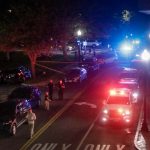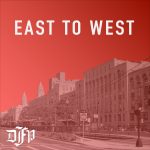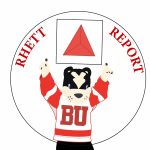After two years of developing a satellite, the Boston University Student-satellite for Applications and Training will complete the project by April, when it undergoes review by the University Nanosat Program, members said.
With partial funding from the UNP, the students have continued working on the satellite, which will study the northern lights in the auroral zone, said BUSAT member Shannon Boyle.
“We have design reviews that need to be perfect, because we want to show UNP that we have a great satellite and a great scientific mission,” Boyle, a College of Arts and Sciences junior, said.
Four BUSAT members attended a UNP course on how to build a satellite at Kirtland Air Force Base in Albuquerque, N.M. from Nov. 16 to Nov. 19.
College of Engineering senior Kevin Zagorski, who attended the course, said that participation was voluntary, but he couldn’t pass up the opportunity to gain hands-on satellite design experience.
During the satellite course, BUSAT members received technical, hands-on tutorials in areas such as soldering, wiring and mechanical testing, said ENG senior Daniel Taylor.
Mechanical engineering professor Ted Fritz, the team’s principal investigator, said that teams from 10 universities nationwide are competing to design hardware for the best autonomous satellite. The winning design is expected to receive an additional two years of funding and launch the satellite into orbit, he said.
Last August, five BUSAT members presented information at the Preliminary Design Review in Logan, Utah, Boyle said.
While this is BU’s second time participating in UNP, members believe they are more prepared for Nanosat-7 than they were for the 2007 to 2009 Nanosat-5 competition, Fritz said.
“BUSAT really makes you realize how important documentation is,” Boyle said. “We didn’t have much written work from BUSAT 1 to help us with BUSAT 2, so we are writing everything down.”
Taylor, who is in charge of the design and construction of a satellite communications ground station, said regardless of the result of the competition, the ground station will be a part of a worldwide ground station network.
BUSAT has been an awesome experience because of the freedom given to complete goals and meet deadlines on his own, Taylor said.
“The project is simultaneously open-ended and goal-oriented,” he said. “There are goals that our team has to meet, but each person can come up with their own unique way to solve problems as they are presented.”
Fritz said he feels very enthusiastic about the program and that the level of competition is a motivating factor.
“I’m impressed by what students can accomplish given the resources and the responsibility to make a certain widget happen,” Fritz said. “Students are resourceful and dedicated, and I guess the competition brings the flavor of being part of a team. All of this is very positive.”
Taylor said that as an aerospace engineering major, BUSAT has provided “valuable engineering experience.”
BUSAT has not only expanded his network but also enabled him to enhance his engineering education, he said.
“I’ve been able to apply my engineering knowledge and problem-solving skills to situations outside of the classroom and beyond the realm of normal coursework,” Taylor said. “I’ve gained valuable engineering experiences during my time with BUSAT that I will be able to pull from during job interviews.”
This is an account occasionally used by the Daily Free Press editors to post archived posts from previous iterations of the site or otherwise for special circumstance publications. See authorship info on the byline at the top of the page.



